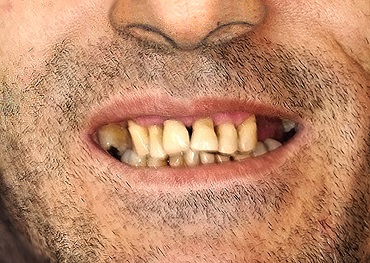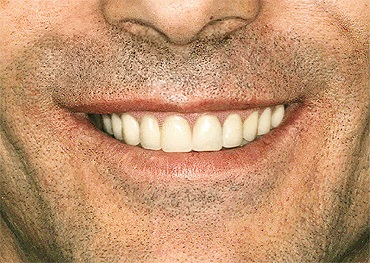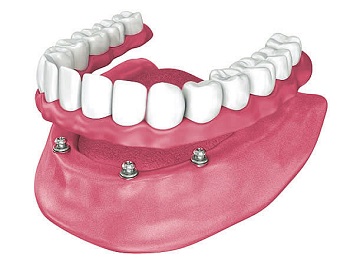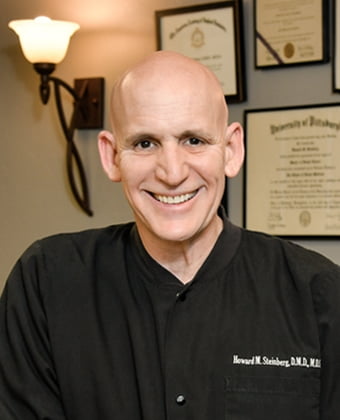Tucson Dental Implants

The two basic situations where implants are used are replacing single teeth and replacing multiple teeth, up to an entire arch of teeth. An implant replacing a single tooth is comprised of a titanium root, a crown that looks exactly like a tooth, and an abutment that connects the two. The more teeth you are missing, the more implants you’ll need. However, a single implant can support more than one crown, and a set of four or more implants can even hold a complete upper or lower arch of teeth, giving an edentulous person an entirely new smile and restoring their ability to speak and chew naturally.
For replacing several teeth in a row, an implant bridge can be used. Click here to read more about implant bridges.
Prosthodontists Are Dental Implant Specialists
He also does advanced implantology, such as bone grafts, sinus lifts, periosteal implants, and Ramus frame implants.
If you are missing all your teeth, there are several options available for you, including:
Protecting Your Jawbone
When you lose your teeth, your jawbone begins to atrophy. That’s because natural teeth send signals to the bone and nerve tissue in the jaw. When those signals stop, your body decides the jawbone is no longer needed and uses its minerals elsewhere. In ten or twenty years, you can experience a condition called facial collapse.
The only way to stop the bone loss is to replace the missing tooth roots with implants. Depending on your age, your health, and how long it has been since you lost the teeth, your jawbone may already be too weak to support an implant. Fortunately, Dr. Steinberg can fortify your jaw with one or more bone grafts.
Getting a Single Tooth Replaced
At your first appointment, Dr. Steinberg will evaluate your needs and determine whether you’re an implant candidate.
To ensure the implants are a precise fit, we will take detailed optical impressions of the inside of your mouth. He will also use a CBCT scanner to provide him with three-dimensional x-rays of your jawbone. This information will be used to determine the exact position for the root forms.
Dr. Steinberg will surgically insert the titanium roots into your jaw at your next appointment. He has been performing implant surgery since 1986 and offers oral and IV sedation for anxious patients. For particularly complex cases, Dr. Steinberg may work with a periodontist or an oral surgeon to ensure the very best care for you.
After the titanium post is in your jaw, over the next few months it fuses with the surrounding bone, a process called osseointegration. When osseointegration is complete, you’ll return to the office to have a permanent, custom-crafted porcelain crown placed on the root. In the meantime, you may have a temporary tooth placed in the space.
Implants can last a lifetime with good care. You’ll need to brush and floss diligently and come in for regular cleanings and exams. If you’d like to make an appointment with Dr. Steinberg and find out if dental implants are right for you, please call our office at (520) 886-3030 or request an appointment using this form. We will schedule you for a complimentary consultation so you can meet Dr. Steinberg, and he can answer your questions.
Sample Implant Case
This patient of Dr. Steinberg opted for implant-supported bridges to restore his smile.








